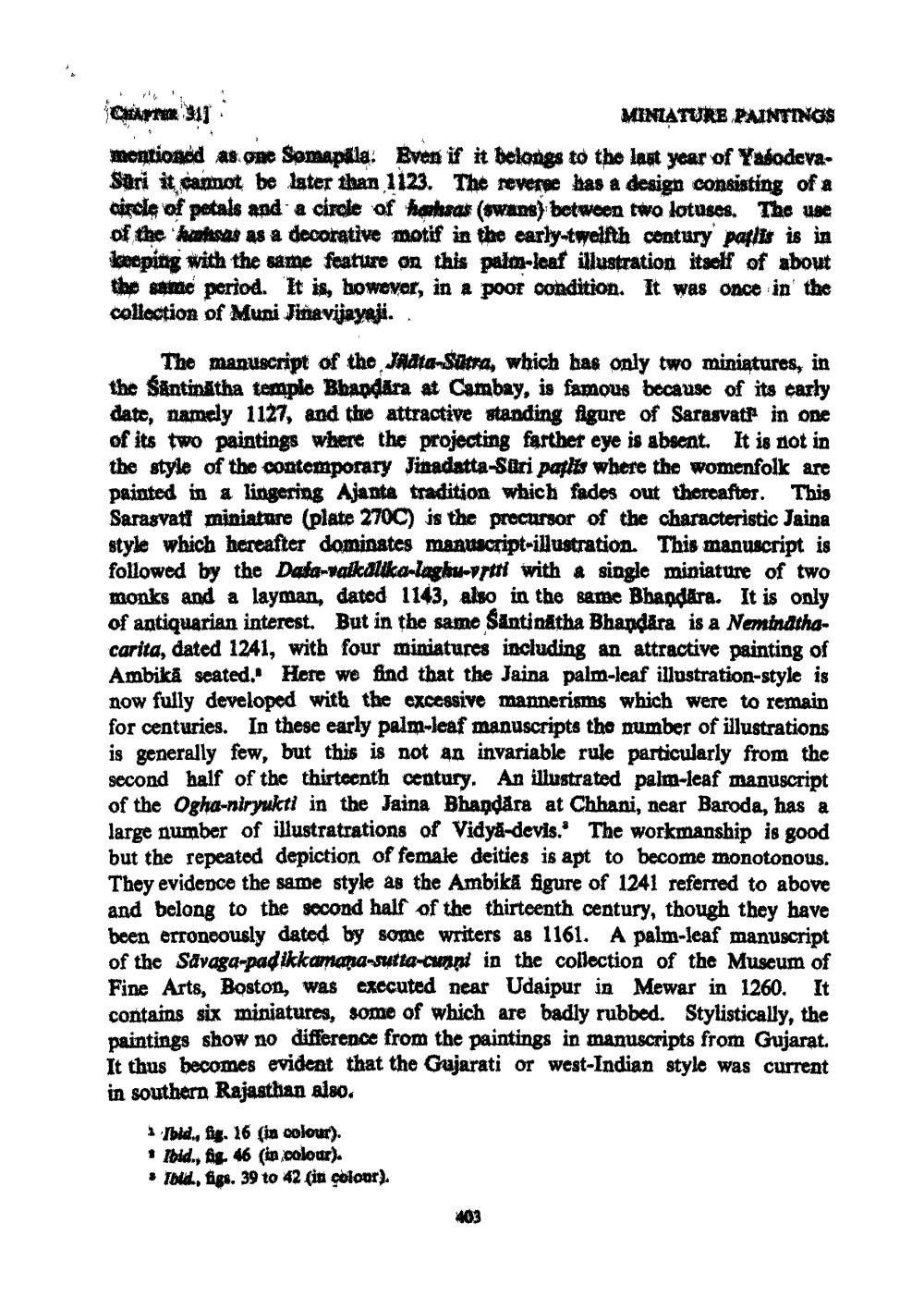________________
CHAPTER 31]
MINIATURE PAINTINGS
mentioned as one Somapala. Even if it belongs to the last year of YasodevaSari it cannot be later than 1123. The reverse has a design consisting of a circle of petals and a circle of harhaas (swans) between two lotuses. The use of the haksas as a decorative motif in the early-twelfth century patlis is in keeping with the same feature on this palm-leaf illustration itself of about the same period. It is, however, in a poor condition. It was once in the collection of Muni Jinavijayaji..
The manuscript of the Jäta-Sutra, which has only two miniatures, in the Santinatha temple Bhandara at Cambay, is famous because of its early date, namely 1127, and the attractive standing figure of Sarasvath in one of its two paintings where the projecting farther eye is absent. It is not in the style of the contemporary Jinadatta-Suri patlis where the womenfolk are painted in a lingering Ajanta tradition which fades out thereafter. This Sarasvati miniature (plate 270C) is the precursor of the characteristic Jaina style which hereafter dominates manuscript-illustration. This manuscript is followed by the Data-valkalika-laghu-vṛtti with a single miniature of two monks and a layman, dated 1143, also in the same Bhandara. It is only of antiquarian interest. But in the same Santinatha Bhandara is a Neminathacarita, dated 1241, with four miniatures including an attractive painting of Ambika seated. Here we find that the Jaina palm-leaf illustration-style is now fully developed with the excessive mannerisms which were to remain for centuries. In these early palm-leaf manuscripts the number of illustrations is generally few, but this is not an invariable rule particularly from the second half of the thirteenth century. An illustrated palm-leaf manuscript of the Ogha-niryukti in the Jaina Bhandara at Chhani, near Baroda, has a large number of illustratrations of Vidya-devis. The workmanship is good but the repeated depiction of female deities is apt to become monotonous. They evidence the same style as the Ambikä figure of 1241 referred to above and belong to the second half of the thirteenth century, though they have been erroneously dated by some writers as 1161. A palm-leaf manuscript of the Savaga-padikkamaṇa-sutta-cuni in the collection of the Museum of Fine Arts, Boston, was executed near Udaipur in Mewar in 1260. It contains six miniatures, some of which are badly rubbed. Stylistically, the paintings show no difference from the paintings in manuscripts from Gujarat. It thus becomes evident that the Gujarati or west-Indian style was current in southern Rajasthan also.
Ibid., fig. 16 (in colour).
Ibid., fig. 46 (in colour). * Ibid., figs. 39 to 42 (in colour).
403




